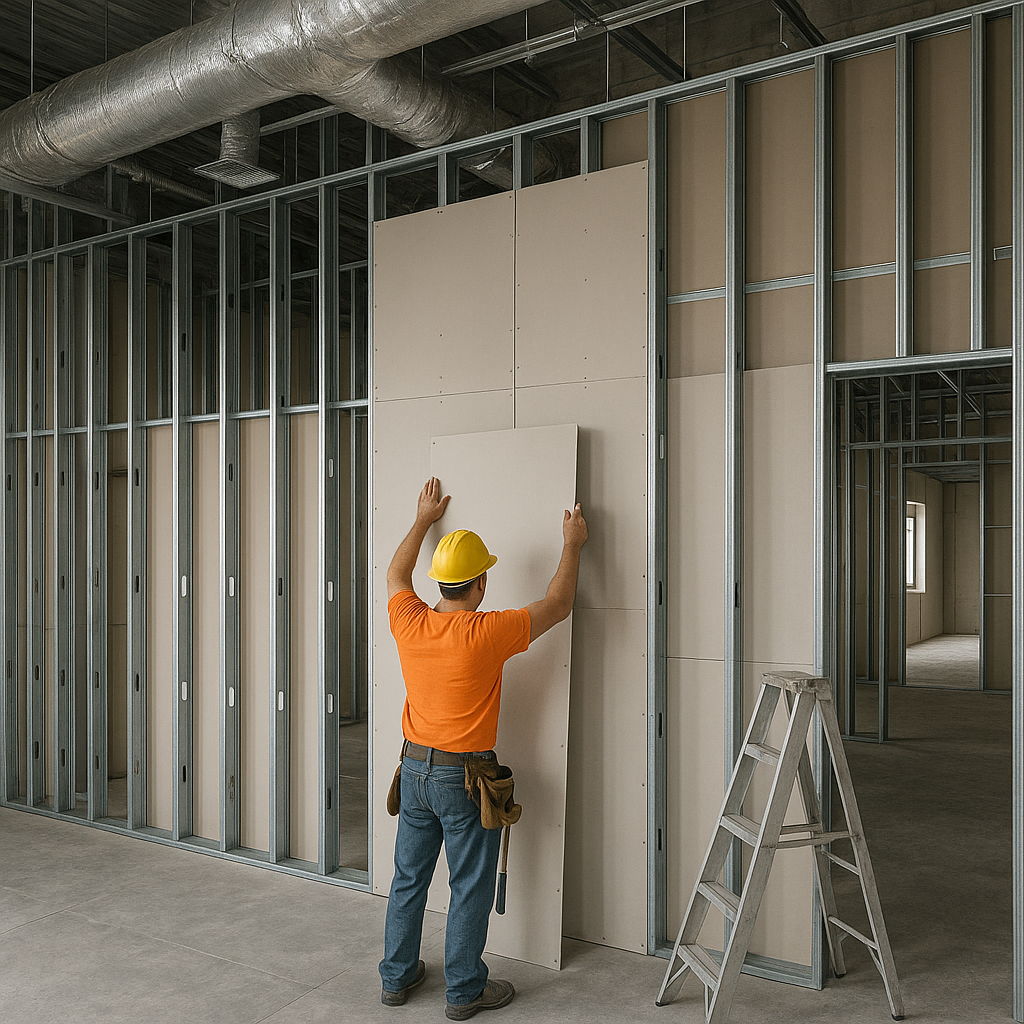
When estimating drywall costs in multi-story buildings, one of the most frequently underestimated variables is staging. Elevators, stair cores, and hoisting strategies directly impact labor productivity, equipment costs, and even material waste. Yet many estimators still rely on assumptions that fail to account for the real-world complexities of vertical logistics. For architects, engineers, and general contractors, understanding how to properly account for these staging factors is essential for delivering more accurate and defensible estimates.
In single-story buildings, the path from storage to installation is relatively straightforward. But in multi-story environments, moving materials becomes exponentially more complex:
These staging challenges affect not just timeline but also overall budget. Underestimating the cost and time required to stage materials and labor can lead to overages, coordination issues, and strained subcontractor relationships.
Estimators working in vertically stacked environments must apply logic that goes beyond material quantities. Factors such as floor height, service elevator location, material drop points, and the availability of staging space on each level must be considered. Active Estimating enables teams to integrate staging assumptions directly into estimate logic.
In a recent mixed-use tower, crews working above the 10th floor required a dedicated elevator operator and after-hours crane access. Estimates that failed to include this added over $85,000 in unplanned labor costs. Using continuous feedback and cost tracking tools, estimators revised future project assumptions based on these actuals—ensuring more accurate forecasting in similar builds going forward.
Using drywall estimating systems that allow for subjective and objective cost drivers gives estimators the ability to tag specific vertical logistics as a variable. This enables dynamic updates as site logistics evolve and provides clear documentation for stakeholders on how access affects budget.
Modern estimation platforms support 3D visualization tools to show where and how materials move through a jobsite. This helps teams identify pinch points in hoisting plans and coordinate with other trades to mitigate disruptions. Transparency in these constraints also helps owners and general contractors understand cost implications before construction begins.
Accurately accounting for staging and elevator logistics in multi-story projects is no longer optional. It’s a core competency that separates strong estimators from the rest. With the help of integrated platforms like Active Estimating, project teams can plan for these vertical realities—not react to them. The result is fewer surprises, tighter schedules, and cost forecasts that actually hold up once boots hit the site.
Contact Information:
Active Estimating
508 2nd Street, Suite 208
Davis
California
95616
Rich Schoener
richard@activeestimating.com
(877)
Schedule a personalized demo to see how Active Estimating can work for your specific needs.
